Athlete’s Foot
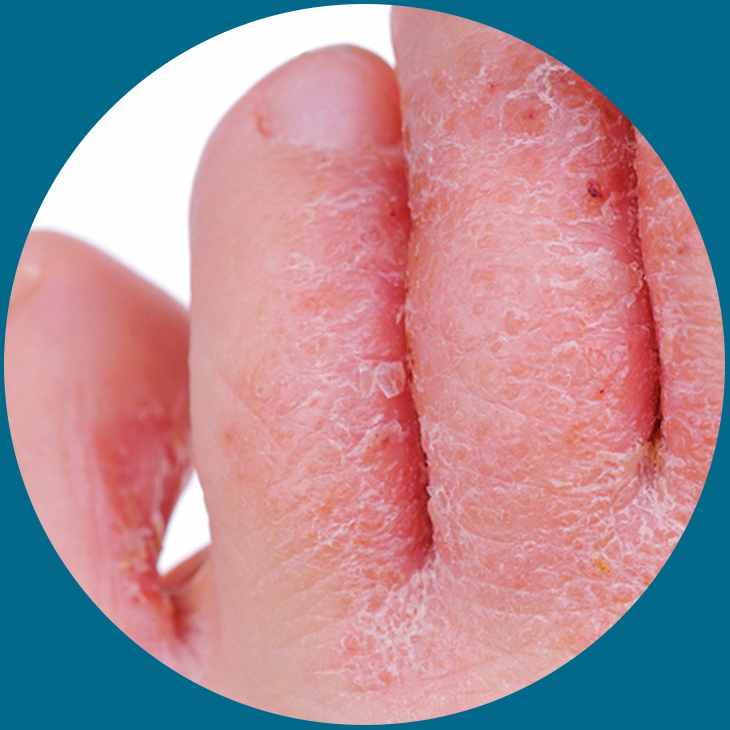
Athlete’s foot is relatively common, and as its name suggests affects the feet. It is a fungal infection of the skin, and is usually seen in between the toes, or on the sole of the foot.
Athlete’s foot can be very uncomfortable at its worst, or mildly itchy at its least severe. It causes changes in the structure of the skin, often causing skin to flake, peel or even split. Itching the skin increases the likelihood of the skin splitting, which in turn can lead to a secondary infection. Split skin can also be very painful.
The infection is caused by dermatophytes which thrive in the conditions we place our feet in every day. Inside shoes the environment is dark, warm and moist, which just happens to be the perfect environment for a fungal infection to thrive.
People are often embarrassed about skin conditions affecting their feet, but athlete’s foot is one which can be easily diagnosed and treatment has very good outcomes. If you suspect you may have athlete’s foot have a podiatrist take a look and get your feet back to normal as quickly as possible.

Athlete’s foot is relatively common, and as its name suggests affects the feet. It is a fungal infection of the skin, and is usually seen in between the toes, or on the sole of the foot.
Athlete’s foot can be very uncomfortable at its worst, or mildly itchy at its least severe. It causes changes in the structure of the skin, often causing skin to flake, peel or even split. Itching the skin increases the likelihood of the skin splitting, which in turn can lead to a secondary infection. Split skin can also be very painful.
The infection is caused by dermatophytes which thrive in the conditions we place our feet in every day. Inside shoes the environment is dark, warm and moist, which just happens to be the perfect environment for a fungal infection to thrive.
People are often embarrassed about skin conditions affecting their feet, but athlete’s foot is one which can be easily diagnosed and treatment has very good outcomes. If you suspect you may have athlete’s foot have a podiatrist take a look and get your feet back to normal as quickly as possible.
Bunions
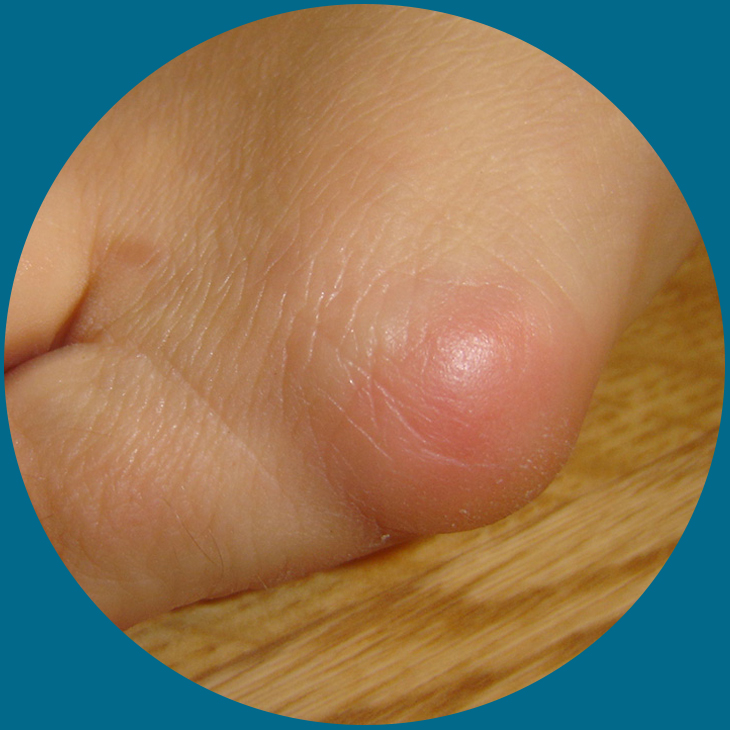
A bunion or hallux valgus, is a change to the bone structure at the base of the big toe. It is an enlargement if the joint and a change in direction of where the big toe “points”, towards the second toe. This change in direction leads to an increase in the size of the joint, and often the formation of an overlying bursa which may appear red and swollen. A bursa is a fluid filled sack that lies under the skin but over the joint, it is the body’s way of protecting the joint.
Genetics play the largest part in determining whether or not you will get a bunion. Some people develop bunions after a specific trauma, or as part of the development of rheumatoid arthritis.
Females are more likely to develop a bunion than men, this has often been described as being due to the wearing of high heeled shoes. Although poorly fitting shoes can speed up bunion development, genetics play the largest role in determining if you will get one or not.
You don’t need to seek treatment if your bunions are not painful, and many are not painful at all. Being sensible with shoe widths is always the most appropriate thing to do. Good fitting shoes with a fastener are the best, so that you can get a good fit in the forefoot whilst enabling the shoe to hold onto the foot.

A bunion or hallux valgus, is a change to the bone structure at the base of the big toe. It is an enlargement if the joint and a change in direction of where the big toe “points”, towards the second toe. This change in direction leads to an increase in the size of the joint, and often the formation of an overlying bursa which may appear red and swollen. A bursa is a fluid filled sack that lies under the skin but over the joint, it is the body’s way of protecting the joint.
Genetics play the largest part in determining whether or not you will get a bunion. Some people develop bunions after a specific trauma, or as part of the development of rheumatoid arthritis.
Females are more likely to develop a bunion than men, this has often been described as being due to the wearing of high heeled shoes. Although poorly fitting shoes can speed up bunion development, genetics play the largest role in determining if you will get one or not.
You don’t need to seek treatment if your bunions are not painful, and many are not painful at all. Being sensible with shoe widths is always the most appropriate thing to do. Good fitting shoes with a fastener are the best, so that you can get a good fit in the forefoot whilst enabling the shoe to hold onto the foot.
Bursitis
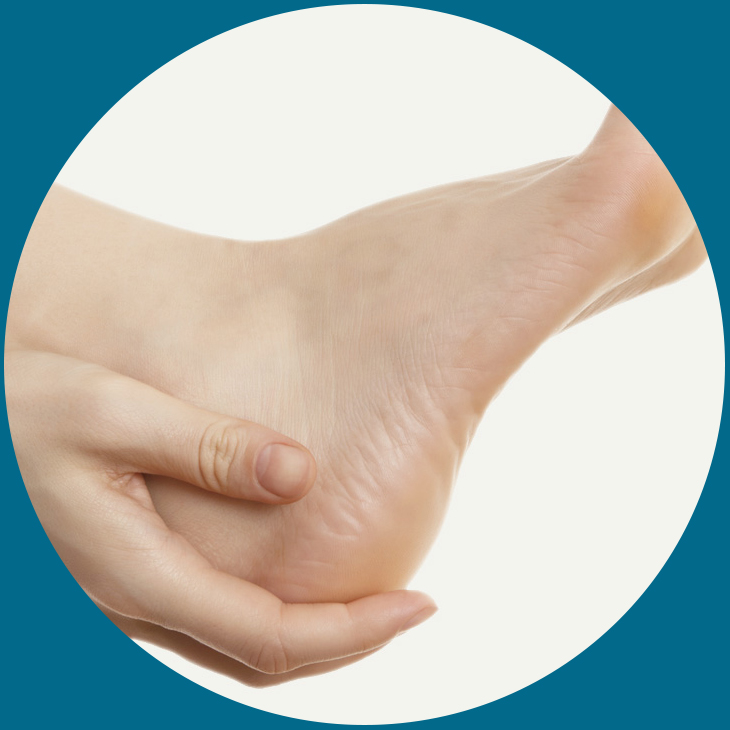
Bursitis is a relatively common condition that can affect many different areas in the body. There are a number of locations in the foot where bursitis can present. Commonly at the back of the heel, under the heel, and at the side of a bunion.
A bursa is a fluid filled sack, which can reduce friction from tendons, think of it like a blister, but sitting deep to the skin. A bursa which becomes inflamed is a bursitis. They can often be accompanied by a redness and swelling over the local area.
Bursae have two main types, adventitious bursa and anatomical bursa. Adventitious bursae form in response to friction, a common place they can be found is overlying a bunion, they can enlarge the area and cause further problems fitting into footwear.
Anatomical bursae are found in normal anatomy, and serve to reduce the friction of tendons, bjut they can still be prone to inflammation in the case of overuse.
Common treatments surrounding bursitis are facilitating rest for the structures involved. With the foot this can be difficult, as we need to walk around, so it can often be achieved through taping or the use of a foot orthotic. The prognosis for bursitis is usually good, and in most cases the inflammation can be reduced quickly, and the underlying cause can then be dealt with.

Bursitis is a relatively common condition that can affect many different areas in the body. There are a number of locations in the foot where bursitis can present. Commonly at the back of the heel, under the heel, and at the side of a bunion.
A bursa is a fluid filled sack, which can reduce friction from tendons, think of it like a blister, but sitting deep to the skin. A bursa which becomes inflamed is a bursitis. They can often be accompanied by a redness and swelling over the local area.
Bursae have two main types, adventitious bursa and anatomical bursa. Adventitious bursae form in response to friction, a common place they can be found is overlying a bunion, they can enlarge the area and cause further problems fitting into footwear.
Anatomical bursae are found in normal anatomy, and serve to reduce the friction of tendons, bjut they can still be prone to inflammation in the case of overuse.
Common treatments surrounding bursitis are facilitating rest for the structures involved. With the foot this can be difficult, as we need to walk around, so it can often be achieved through taping or the use of a foot orthotic. The prognosis for bursitis is usually good, and in most cases the inflammation can be reduced quickly, and the underlying cause can then be dealt with.
Chilblains
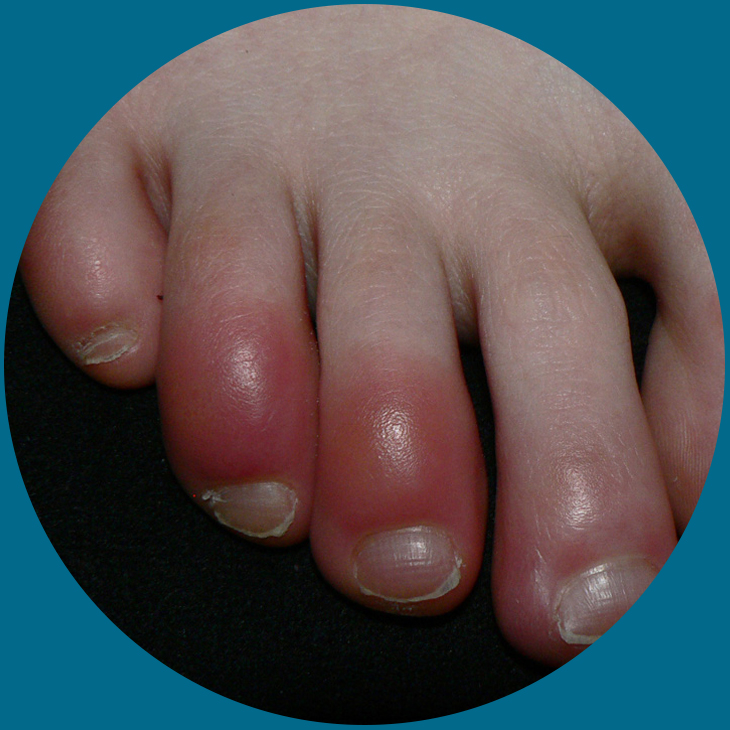
Chilblains, or pernio as they are also known a small sometimes painful or itchy lesions that commonly affect the toes. Due to the cause (cold) they are prevalent during winter time. The low temperature cause a constriction to the arterioles supplying blood to the skin, and followed by a rapid warming there is subsequent damage which can lead to a blistering, redness, and sometimes itchy lesion. These lesions can often be painful, and in severe cases can lead to ulceration.
Prevention, as always is better than cure. Keeping feet warm throughout the winter is the best weapon in the fight against chilblains for sufferers. This can be achieved through wearing a well fitting full shoe, natural fibre socks, and a thermal lined insole. Regular soaking of feet in warm water will aid in maintaining temperature too. If feet do get cold, it is important to slowly warm the foot, and not lets its temperature rise too quickly.
There are a number of products available from pharmacies which may help sufferers. They are usually rubefacients, which increase blood flow to the skin by causing an inflammatory response, this can be very helpful in the prevention of these lesions forming. Regular exercise, and a healthy diet have also been shown to reduce the incidence of chilblains, but the most important factor is keeping toes warm for as long as possible.

Chilblains, or pernio as they are also known a small sometimes painful or itchy lesions that commonly affect the toes. Due to the cause (cold) they are prevalent during winter time. The low temperature cause a constriction to the arterioles supplying blood to the skin, and followed by a rapid warming there is subsequent damage which can lead to a blistering, redness, and sometimes itchy lesion. These lesions can often be painful, and in severe cases can lead to ulceration.
Prevention, as always is better than cure. Keeping feet warm throughout the winter is the best weapon in the fight against chilblains for sufferers. This can be achieved through wearing a well fitting full shoe, natural fibre socks, and a thermal lined insole. Regular soaking of feet in warm water will aid in maintaining temperature too. If feet do get cold, it is important to slowly warm the foot, and not lets its temperature rise too quickly.
There are a number of products available from pharmacies which may help sufferers. They are usually rubefacients, which increase blood flow to the skin by causing an inflammatory response, this can be very helpful in the prevention of these lesions forming. Regular exercise, and a healthy diet have also been shown to reduce the incidence of chilblains, but the most important factor is keeping toes warm for as long as possible.
Corns and Callus
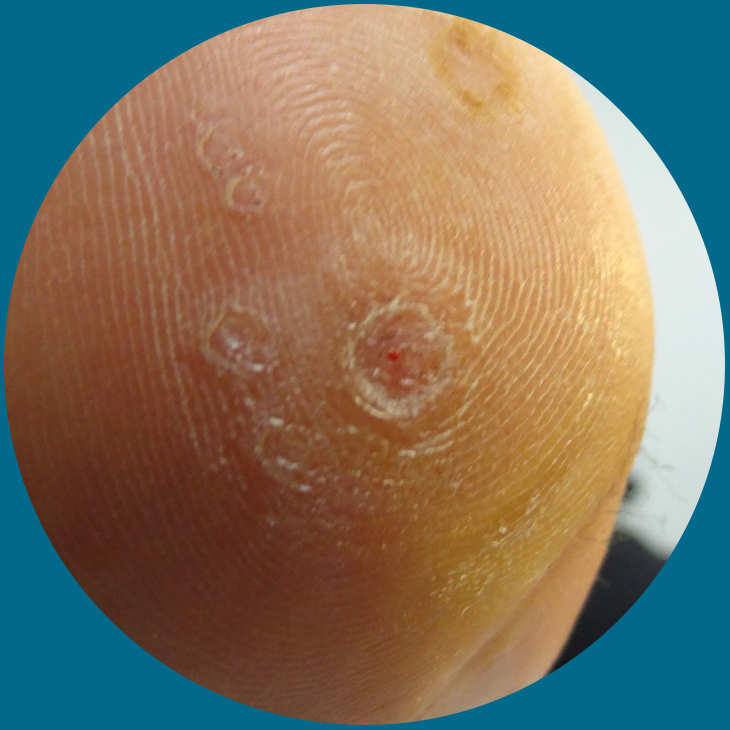
Perhaps the most common reason that people seek treatment from a Podiatrist is to deal with callus or corns, as they can be very painful and make walking difficult.
Pressure is the key to the formation of callus and corns. Intermittent compressive forces (from walking) cause a response from the skin to produce callosities. This layer can at first be protective, and an advantage, but they can very quickly become painful if they progress to far.
A corn is a small, usually conical structure that forms from pressure. It is formed within the skin, is very hard, and can cause a lot of pain. Common locations for corns to form are on the tops of toes, or underneath the metatarsal heads on the plantar aspect of the foot.
Corns and callus can be very successfully treated by the skilled hand of a Podiatrist. They can use a scalpel to painlessly remove corns and callus. The aim is to prevent the structures reforming whenever possible, and this can often be achieved by changing footwear or redistributing pressure.

Perhaps the most common reason that people seek treatment from a Podiatrist is to deal with callus or corns, as they can be very painful and make walking difficult.
Pressure is the key to the formation of callus and corns. Intermittent compressive forces (from walking) cause a response from the skin to produce callosities. This layer can at first be protective, and an advantage, but they can very quickly become painful if they progress to far.
A corn is a small, usually conical structure that forms from pressure. It is formed within the skin, is very hard, and can cause a lot of pain. Common locations for corns to form are on the tops of toes, or underneath the metatarsal heads on the plantar aspect of the foot.
Corns and callus can be very successfully treated by the skilled hand of a Podiatrist. They can use a scalpel to painlessly remove corns and callus. The aim is to prevent the structures reforming whenever possible, and this can often be achieved by changing footwear or redistributing pressure.
Flat Feet
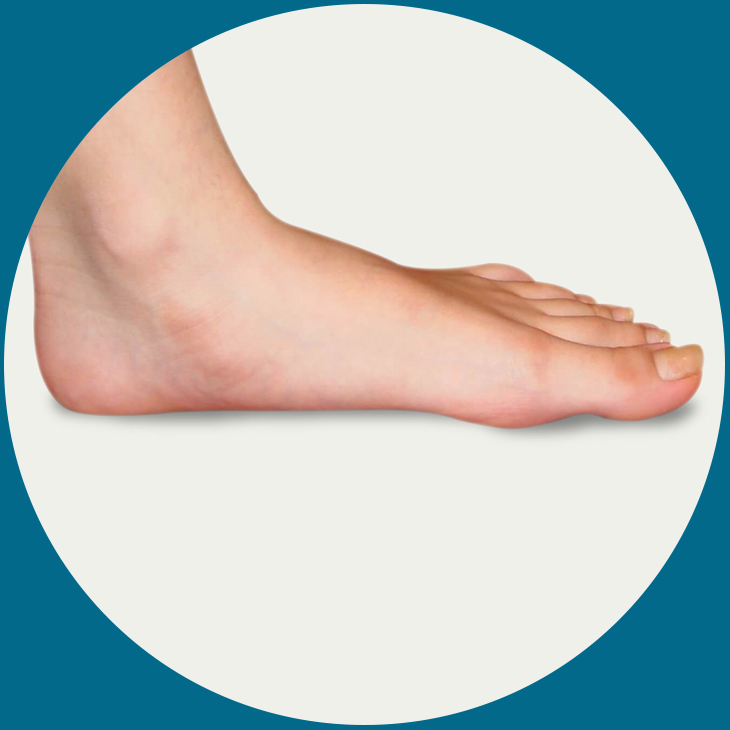
Flat feet is a condition in which the foot doesn’t have a normal arch. It may affect one foot or both feet. Most people have a gap between in the inner side of the foot and the ground when they are standing. This is referred to as an “arch”. Feet that have a low arch or no arch at all are referred to as flat feet or fallen arches. On standing the patient will have a flat arch and the foot may roll over to the inner aspect. The symptoms vary depending on the severity of the condition. Individuals may experience corns and hard skin under the sole of the foot. The arch area may be tender and shoes will tend to wear out quickly. In severe cases the patient may experience calf, knee, hip and back pain.
Flat Feet can be effectively treated with orthotics that provide biomechanical support and help feet to function more efficiently. The most effective orthotics are those which are custom made to fit your foot. The orthotic should provide both support for the longitudinal arch and medial rear foot posting to combat over pronation. Orthotics should be combined with supportive footwear that fits the foot correctly and contains a firm, low heel.
In the most extreme circumstances the Podiatrist may suggest Surgery, but this would only be if all treatment options had been exhausted.

Flat feet is a condition in which the foot doesn’t have a normal arch. It may affect one foot or both feet. Most people have a gap between in the inner side of the foot and the ground when they are standing. This is referred to as an “arch”. Feet that have a low arch or no arch at all are referred to as flat feet or fallen arches. On standing the patient will have a flat arch and the foot may roll over to the inner aspect. The symptoms vary depending on the severity of the condition. Individuals may experience corns and hard skin under the sole of the foot. The arch area may be tender and shoes will tend to wear out quickly. In severe cases the patient may experience calf, knee, hip and back pain.
Flat Feet can be effectively treated with orthotics that provide biomechanical support and help feet to function more efficiently. The most effective orthotics are those which are custom made to fit your foot. The orthotic should provide both support for the longitudinal arch and medial rear foot posting to combat over pronation. Orthotics should be combined with supportive footwear that fits the foot correctly and contains a firm, low heel.
In the most extreme circumstances the Podiatrist may suggest Surgery, but this would only be if all treatment options had been exhausted.
Freibergs Infraction
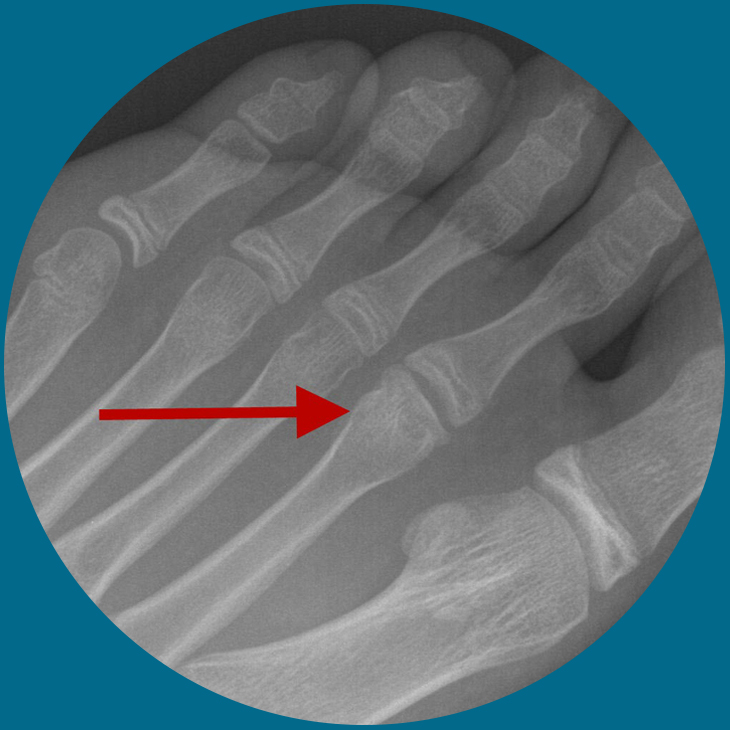
Freiberg’s Infraction occurs when the head of the 2nd metatarsal bone (the toe closest to the big toe) has a focal loss of blood supply.
Freiberg’s Infraction occurs when the head of the 2nd metatarsal bone (the toe closest to the big toe) has a focal loss of blood supply. The result is a collapse of the metatarsal head. Sometimes the heads of the third and fourth metatarsal bones are also involved. It is most common in girls and boys and most often appears between the ages of 11 and 17 years.
Freibergs Infraction can often be the result of stress or injury to the foot. Overzealous sporting activities such as running and jumping, as well as rapid skeletal growth can increase the risk of developing Freibergs Infraction.

Freiberg’s Infraction occurs when the head of the 2nd metatarsal bone (the toe closest to the big toe) has a focal loss of blood supply.
Freiberg’s Infraction occurs when the head of the 2nd metatarsal bone (the toe closest to the big toe) has a focal loss of blood supply. The result is a collapse of the metatarsal head. Sometimes the heads of the third and fourth metatarsal bones are also involved. It is most common in girls and boys and most often appears between the ages of 11 and 17 years.
Freibergs Infraction can often be the result of stress or injury to the foot. Overzealous sporting activities such as running and jumping, as well as rapid skeletal growth can increase the risk of developing Freibergs Infraction.
Fungal Nails
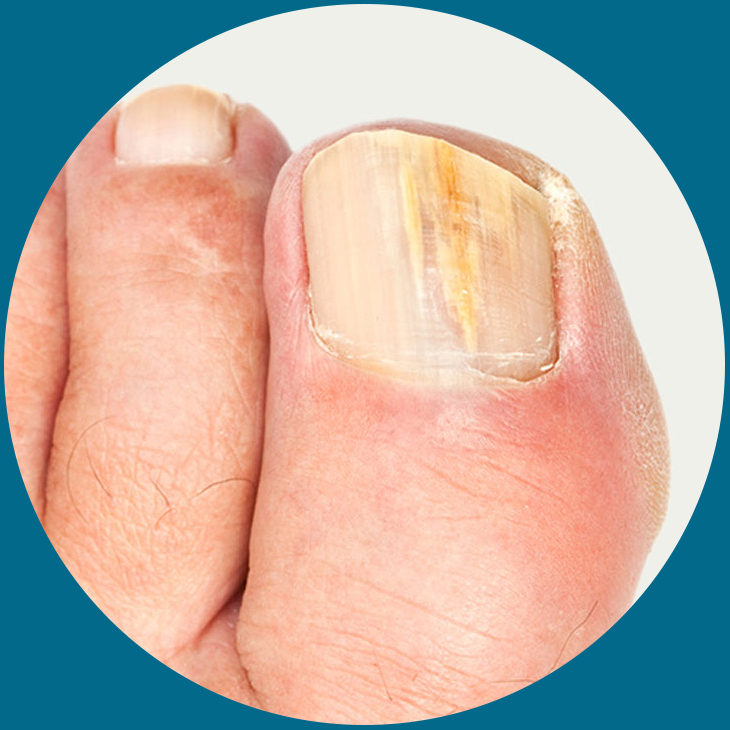
Fungal nails cause dramatic visual changes to a nail which can be unsightly. They can make the nail change colour, can thicken and can break more easily. They can cause more pressure on the end of the toe and can become painful. As the fungal infection progresses they can produce a very distinct odour.
Fungal nails infection (onychomycosis) is very common, particularly in the toenails. Around half of all nail problems are due to fungal nail infection. It usually affects adults, and affects more men than women. It also becomes more common as you get older.
There are several types of fungus that cause nail infections. For example, athlete’s foot is a fungal skin infection of the toes, which easily spreads to the toenails. Candida is a yeast which can cause an infection of the skin around the nails, usually the fingernails.

Fungal nails cause dramatic visual changes to a nail which can be unsightly. They can make the nail change colour, can thicken and can break more easily. They can cause more pressure on the end of the toe and can become painful. As the fungal infection progresses they can produce a very distinct odour.
Fungal nails infection (onychomycosis) is very common, particularly in the toenails. Around half of all nail problems are due to fungal nail infection. It usually affects adults, and affects more men than women. It also becomes more common as you get older.
There are several types of fungus that cause nail infections. For example, athlete’s foot is a fungal skin infection of the toes, which easily spreads to the toenails. Candida is a yeast which can cause an infection of the skin around the nails, usually the fingernails.
Haglands Bump
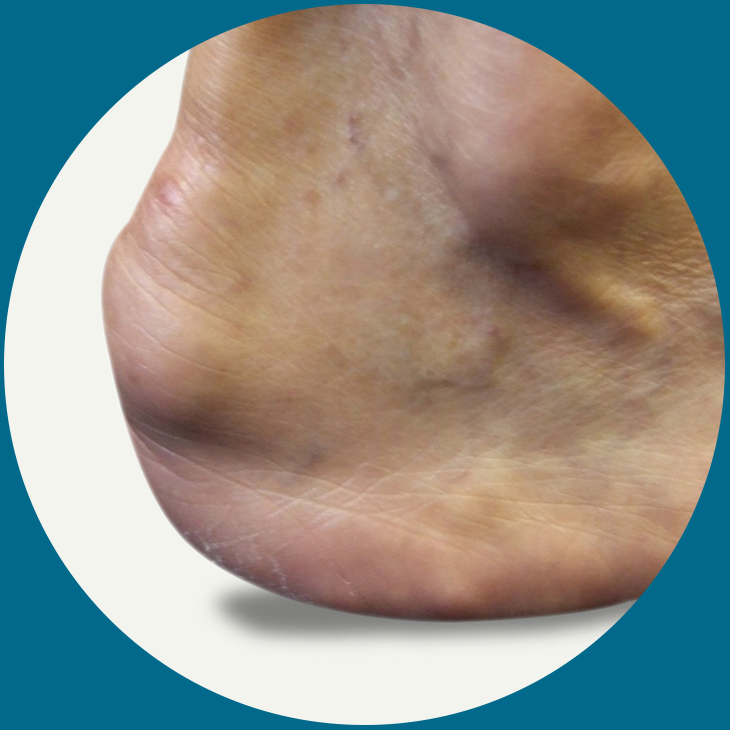
Haglunds heel bumps are formations of bony material that appear on the back of the heels. As the bony enlargement develops a small fluid filled sac can also develop which is called a bursa. When this sac becomes inflamed a condition called bursitis can occur which is very painful in most cases. It may also cause sensitivity and inflammation of the surrounding tissues such as those associated with the Achilles tendon. They can appear on either foot or both equally.
Initially the condition may be treated conservatively as this is less invasive and means the person is less likely to suffer side effects and complications of invasive methods. Pain relief, rest and ice application may help to reduce the discomfort, redness and swelling of the area which may be enough to ease the condition during flare-ups.
Those with hereditary problems such as high arches may find that orthotic devices such as heel pads or shoe inserts may help as this will relieve many of the problems associated with high arches. Soft shoes and those that do not contain hard or constricting backs may help as these will allow the foot and heel to assume their natural shape incorporating the additional bony structure that is a Haglunds bump.
For those who have not had any success with these methods or those whose bump protrudes quite significantly surgery may be recommended.

Haglunds heel bumps are formations of bony material that appear on the back of the heels. As the bony enlargement develops a small fluid filled sac can also develop which is called a bursa. When this sac becomes inflamed a condition called bursitis can occur which is very painful in most cases. It may also cause sensitivity and inflammation of the surrounding tissues such as those associated with the Achilles tendon. They can appear on either foot or both equally.
Initially the condition may be treated conservatively as this is less invasive and means the person is less likely to suffer side effects and complications of invasive methods. Pain relief, rest and ice application may help to reduce the discomfort, redness and swelling of the area which may be enough to ease the condition during flare-ups.
Those with hereditary problems such as high arches may find that orthotic devices such as heel pads or shoe inserts may help as this will relieve many of the problems associated with high arches. Soft shoes and those that do not contain hard or constricting backs may help as these will allow the foot and heel to assume their natural shape incorporating the additional bony structure that is a Haglunds bump.
For those who have not had any success with these methods or those whose bump protrudes quite significantly surgery may be recommended.
Hallux Limitus
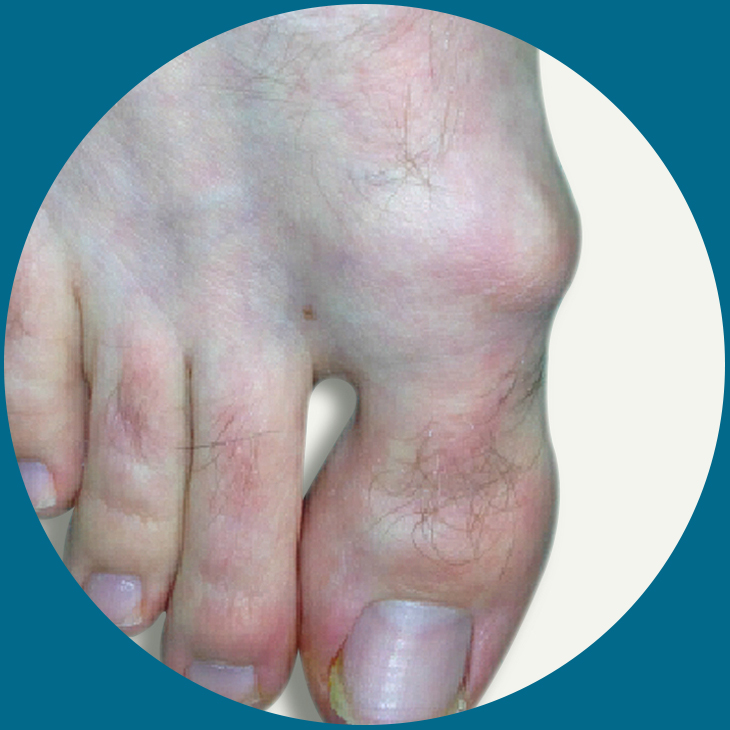
Hallux limitus is a condition in which the big toe joint becomes painful and stiff. It is most often due to osteoarthritis of the joint itself. There are various classifications of this condition but in simple terms it can be mild, moderate or severe. The condition usually gets worse with time and is more common in men than women.
Hallux limitus has many causes which include:
- Injury to the joint
- Infection of the joint
- Osteoarthritis
- Gout
There are other cause but the common theme is that injury to the joint occurs from either one single event or because of repeated injury.
The Podiatrist at Davenport House Clinic can offer the following treatment options:
- Advise appropriate shoes
- Advise exercises
- Consider prescribing orthotics /splints
- Arrange a rocker sole modification for your shoes

Hallux limitus is a condition in which the big toe joint becomes painful and stiff. It is most often due to osteoarthritis of the joint itself. There are various classifications of this condition but in simple terms it can be mild, moderate or severe. The condition usually gets worse with time and is more common in men than women.
Hallux limitus has many causes which include:
- Injury to the joint
- Infection of the joint
- Osteoarthritis
- Gout
There are other cause but the common theme is that injury to the joint occurs from either one single event or because of repeated injury.
The Podiatrist at Davenport House Clinic can offer the following treatment options:
- Advise appropriate shoes
- Advise exercises
- Consider prescribing orthotics /splints
- Arrange a rocker sole modification for your shoes
Hammer Toe
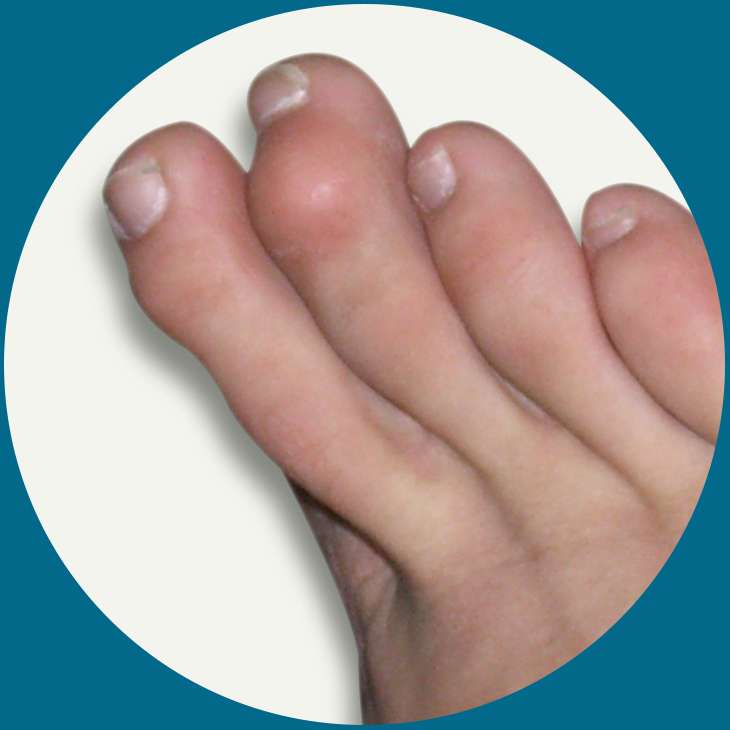
A hammer toe can be best described as an abnormal contraction or “buckling” of a toe. This occurs due to a partial or complete dislocation of one of the joints that form the toe. As the toe continues to be deformed, it will press up against the shoe and may cause corns. If the deformity occurs in the lesser toes and in the joint nearest the foot, it is called a hammer toe.
There are various causes of Hammer Toes:
- Inappropriate shoes.
- Flat feet can result in hammer toes.
- High arched feet can also result in buckling toes.
- A major cause is in hereditary (family), all the toe conditions mentioned could be acquired due to hereditary factors.
- Bunions are a major cause of hammer toes.

A hammer toe can be best described as an abnormal contraction or “buckling” of a toe. This occurs due to a partial or complete dislocation of one of the joints that form the toe. As the toe continues to be deformed, it will press up against the shoe and may cause corns. If the deformity occurs in the lesser toes and in the joint nearest the foot, it is called a hammer toe.
There are various causes of Hammer Toes:
- Inappropriate shoes.
- Flat feet can result in hammer toes.
- High arched feet can also result in buckling toes.
- A major cause is in hereditary (family), all the toe conditions mentioned could be acquired due to hereditary factors.
- Bunions are a major cause of hammer toes.
Heel Pain

Heel pain is one of the most common forms of foot pain in adults. It often occurs as a result of daily activities and exercise. The heel is the largest of the 26 bones in the human foot. It is designed to provide a firm support for the weight of your body. The heel absorbs the impact when your feet hit the ground when walking and running, and it springs you forward, ready for the next step. While walking, the stresses placed on your feet can be one-and-a-quarter times your body weight. So it is not surprising that heel pain is common.
There are many causes of Heel Pain, such as:
- Achillies Tendonitis
- Excessive Pronation
- Haglunds Deformaties
- Heel Spurs
- Inflammatory conditions such as Bursitis, Arthritis and Spondylitis.
- Plantar Fasciitis
- Severs Disease
- Stress fractures
- Tarsal Tunnel Syndrome

Heel pain is one of the most common forms of foot pain in adults. It often occurs as a result of daily activities and exercise. The heel is the largest of the 26 bones in the human foot. It is designed to provide a firm support for the weight of your body. The heel absorbs the impact when your feet hit the ground when walking and running, and it springs you forward, ready for the next step. While walking, the stresses placed on your feet can be one-and-a-quarter times your body weight. So it is not surprising that heel pain is common.
There are many causes of Heel Pain, such as:
- Achillies Tendonitis
- Excessive Pronation
- Haglunds Deformaties
- Heel Spurs
- Inflammatory conditions such as Bursitis, Arthritis and Spondylitis.
- Plantar Fasciitis
- Severs Disease
- Stress fractures
- Tarsal Tunnel Syndrome
Heel Spurs
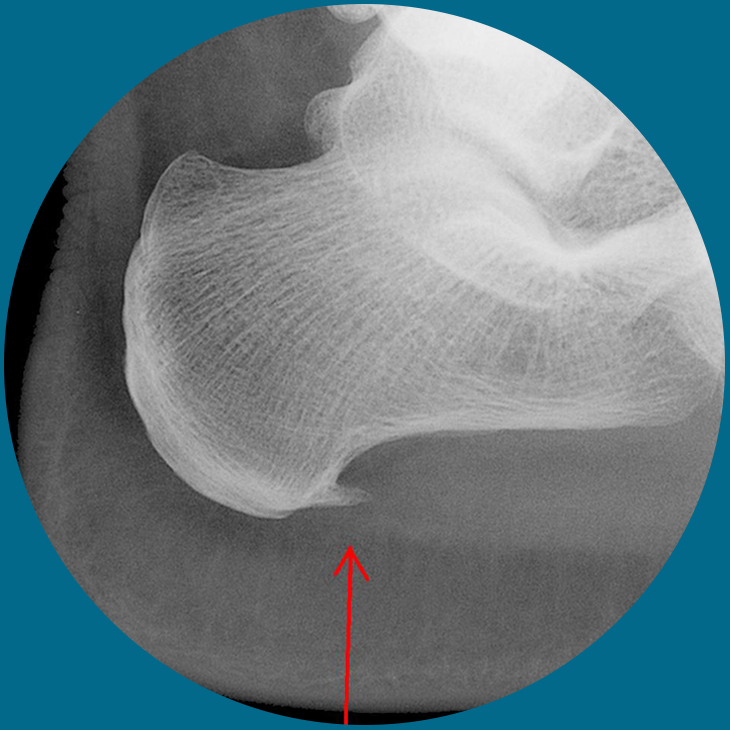
The heel bone is the largest bone in the foot and absorbs the most amount of shock and pressure. A heel spur develops as an abnormal growth of the heel bone. Calcium deposits form when the plantar fascia pulls away from the heel area, causing a bony protrusion, or heel spur to develop. The plantar fascia is a broad band of fibrous tissue located along the bottom surface of the foot that runs from the heel to the forefoot. Heel spurs can cause extreme pain in the rearfoot, especially while standing or walking.
Heel spurs develop as an abnormal growth in the heel bone due to calcium deposits that form when the plantar fascia pulls away from the heel. This stretching of the plantar fascia is usually the result of over-pronation, but people with unusually high arches can also develop heel spurs. Women have a significantly higher incidence of heel spurs due to the types of footwear often worn on a regular basis.

The heel bone is the largest bone in the foot and absorbs the most amount of shock and pressure. A heel spur develops as an abnormal growth of the heel bone. Calcium deposits form when the plantar fascia pulls away from the heel area, causing a bony protrusion, or heel spur to develop. The plantar fascia is a broad band of fibrous tissue located along the bottom surface of the foot that runs from the heel to the forefoot. Heel spurs can cause extreme pain in the rearfoot, especially while standing or walking.
Heel spurs develop as an abnormal growth in the heel bone due to calcium deposits that form when the plantar fascia pulls away from the heel. This stretching of the plantar fascia is usually the result of over-pronation, but people with unusually high arches can also develop heel spurs. Women have a significantly higher incidence of heel spurs due to the types of footwear often worn on a regular basis.
Ingrown Toenail
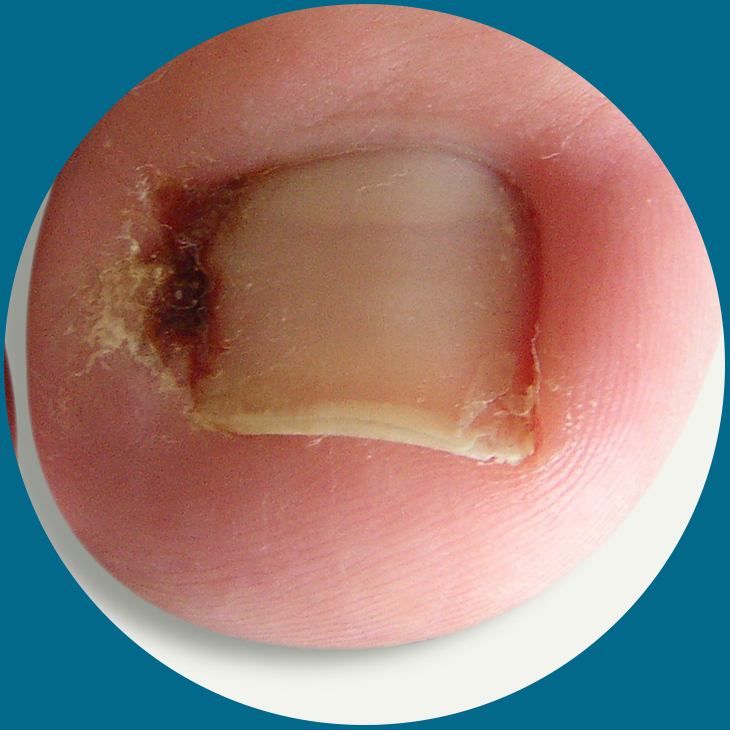
An ingrown toenail occurs when the edge of your toenail grows down and cuts into the surrounding skin. Your big toes are most likely to be affected. Ingrown toenails can occur on just one, or both, sides of your toe.
There are several things that can cause, or contribute to, an ingrown toenail:
- Wearing ill fitting shoes. If your shoes are too tight they can force the skin surrounding your toenail against the nail.
- Cutting your toenails incorrectly. Cutting your nails too short and into a curved shape can make them more likely to grow into your skin.
- An injury to your toenail. An injury can leave your toenail deformed, making it more likely to grow into your skin.
- Fungal nail infections can thicken and distort your toenails. This can make them more likely to become ingrown.
- If you’re very sporty or active, you’re more likely to get an ingrown toenail. This is because your feet will sweat more, making your skin softer and easier for your nails to grow into.
- Ingrown Toenails can often be hereditary.

An ingrown toenail occurs when the edge of your toenail grows down and cuts into the surrounding skin. Your big toes are most likely to be affected. Ingrown toenails can occur on just one, or both, sides of your toe.
There are several things that can cause, or contribute to, an ingrown toenail:
- Wearing ill fitting shoes. If your shoes are too tight they can force the skin surrounding your toenail against the nail.
- Cutting your toenails incorrectly. Cutting your nails too short and into a curved shape can make them more likely to grow into your skin.
- An injury to your toenail. An injury can leave your toenail deformed, making it more likely to grow into your skin.
- Fungal nail infections can thicken and distort your toenails. This can make them more likely to become ingrown.
- If you’re very sporty or active, you’re more likely to get an ingrown toenail. This is because your feet will sweat more, making your skin softer and easier for your nails to grow into.
- Ingrown Toenails can often be hereditary.
Mallet Toe
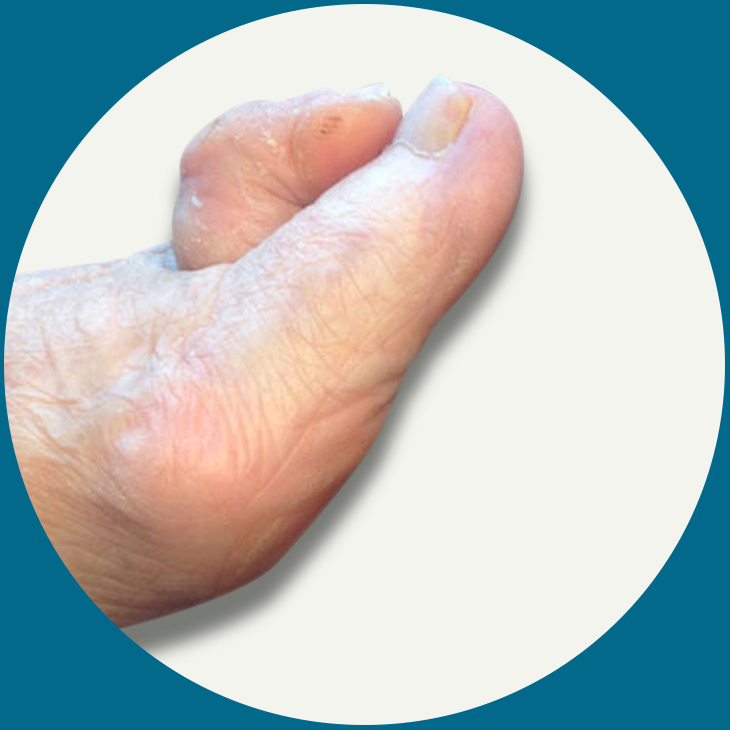
A mallet toe occurs when the joint at the end of the toe cannot straighten. Excessive rubbing of the mallet toe against the top of the shoe can lead to pain and the development of a corn.
Many disorders can affect the joints in the toes, causing pain and preventing the foot from functioning as it should. A mallet toe occurs when the joint at the end of the toe cannot straighten. Excessive rubbing of the mallet toe against the top of the shoe can lead to pain and the development of a corn. The tip of the toe is often turned down against the shoe causing pressure and discomfort.
Arthritis can also lead to many forefoot deformities including mallet toes. Mallet toes can cause extreme discomfort, and can be aggravated if restrictive or improperly fitting footwear is worn for a prolonged period of time.

A mallet toe occurs when the joint at the end of the toe cannot straighten. Excessive rubbing of the mallet toe against the top of the shoe can lead to pain and the development of a corn.
Many disorders can affect the joints in the toes, causing pain and preventing the foot from functioning as it should. A mallet toe occurs when the joint at the end of the toe cannot straighten. Excessive rubbing of the mallet toe against the top of the shoe can lead to pain and the development of a corn. The tip of the toe is often turned down against the shoe causing pressure and discomfort.
Arthritis can also lead to many forefoot deformities including mallet toes. Mallet toes can cause extreme discomfort, and can be aggravated if restrictive or improperly fitting footwear is worn for a prolonged period of time.
Metatarsalgia
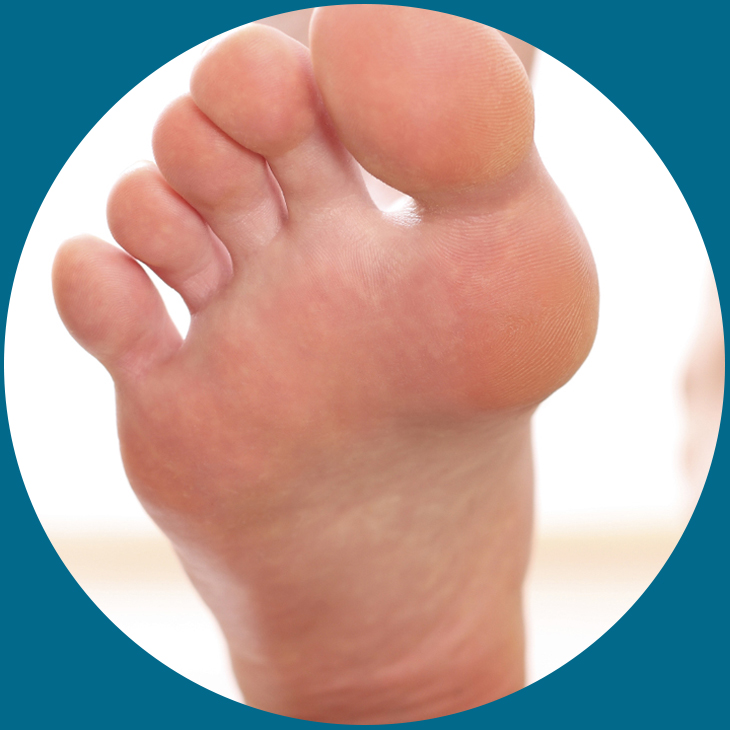
Metatarsalgia is the name given to pain in the front part of your foot under the heads of your metatarsal bones (the ball of your foot).
There are various causes of Metatarsalgia including:
- Badly fitting footwear
– high-heeled or tight, restrictive shoes or boots. Shoes with a narrow toe box or high heels can force the ball of the foot into a small amount of space, which puts more pressure on that area.
- Being overweight
– This can increase the pressure upon the foot.
- Age
– Older people are more susceptible to metatarsalgia as the fat pad that protects the foot can thin with age, making them more likely to feel pain in the ball of their foot.
- Bone structure of the foot
– Narrow, high-arched feet or flat feet can increase the chance of metatarsalgia. Hammer toes (where the toes are bent at the middle joint) and a bunion (bony swelling at the base of the toe) can also bring it on.
- High-impact sports
– such as running or tennis, which puts extra pressure on the foot.
- Stress fractures in the foot
– These occasionally occur in athletes or walkers and cause pain to come on rapidly.

Metatarsalgia is the name given to pain in the front part of your foot under the heads of your metatarsal bones (the ball of your foot).
There are various causes of Metatarsalgia including:
- Badly fitting footwear
– high-heeled or tight, restrictive shoes or boots. Shoes with a narrow toe box or high heels can force the ball of the foot into a small amount of space, which puts more pressure on that area. - Being overweight
– This can increase the pressure upon the foot. - Age
– Older people are more susceptible to metatarsalgia as the fat pad that protects the foot can thin with age, making them more likely to feel pain in the ball of their foot. - Bone structure of the foot
– Narrow, high-arched feet or flat feet can increase the chance of metatarsalgia. Hammer toes (where the toes are bent at the middle joint) and a bunion (bony swelling at the base of the toe) can also bring it on. - High-impact sports
– such as running or tennis, which puts extra pressure on the foot. - Stress fractures in the foot
– These occasionally occur in athletes or walkers and cause pain to come on rapidly.
Morton’s Neuroma
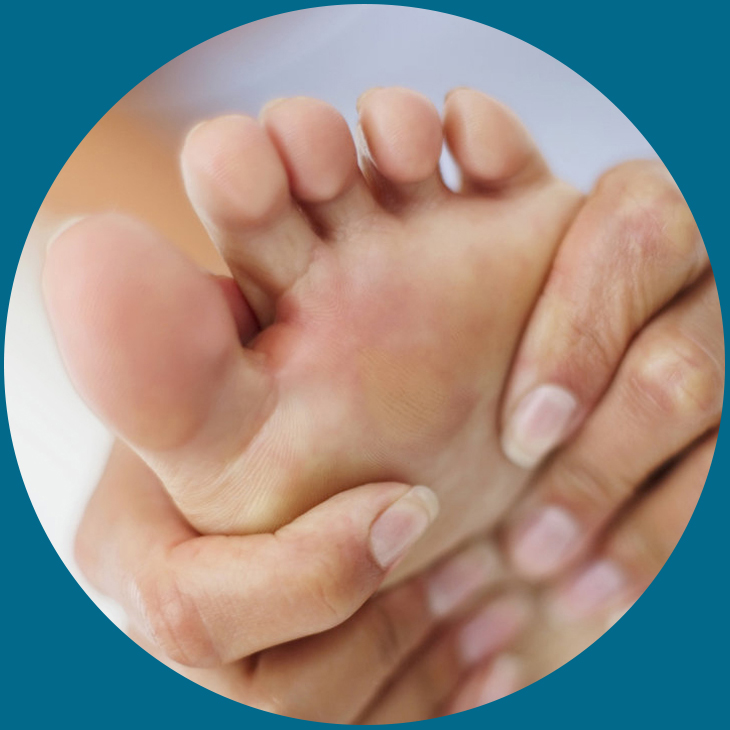
Morton’s neuroma is a common, painful condition affecting the base of the toes – usually the third and fourth toes. The pain, which is sharp and severe (often described as a ‘red hot needle’), suddenly occurs while walking.
The pain happens because the nerve that divides between the metatarsal bones (toe bones) is irritated or compressed. The cause of this irritation is not exactly known, but it may be the metatarsal bones compressing the nerve when the gap between the bones is narrow. This causes the nerve to thicken.
It is rare for more than one nerve to be affected, and it usually only affects one foot.

Morton’s neuroma is a common, painful condition affecting the base of the toes – usually the third and fourth toes. The pain, which is sharp and severe (often described as a ‘red hot needle’), suddenly occurs while walking.
The pain happens because the nerve that divides between the metatarsal bones (toe bones) is irritated or compressed. The cause of this irritation is not exactly known, but it may be the metatarsal bones compressing the nerve when the gap between the bones is narrow. This causes the nerve to thicken.
It is rare for more than one nerve to be affected, and it usually only affects one foot.
Plantar fasciitis
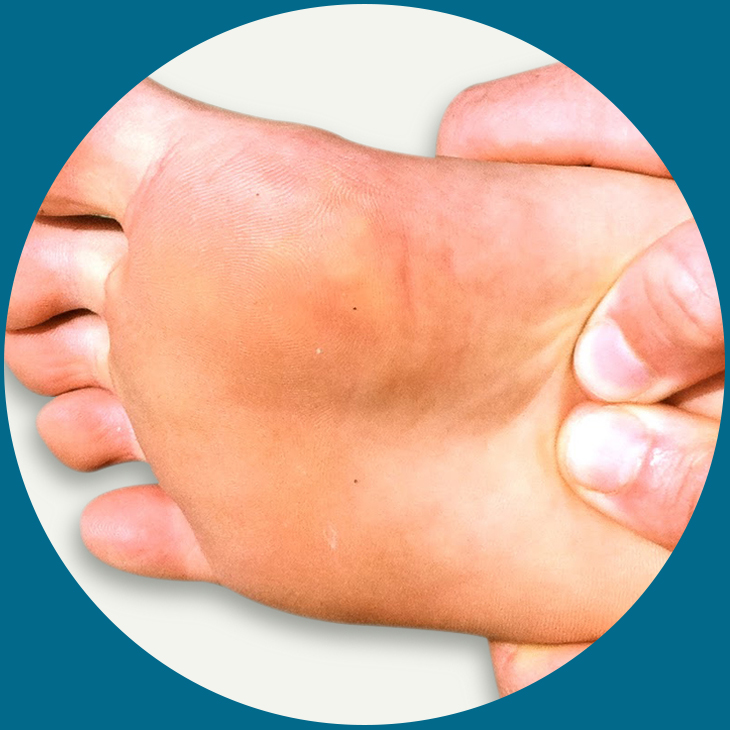
Plantar fasciitis means inflammation of your plantar fascia. Your plantar fascia is a strong band of tissue (like a ligament) that stretches from your heel to your middle foot bones. It supports the arch of your foot and also acts as a shock-absorber in your foot.
Plantar Fasciitis is caused by abnormal pronation of the foot. Contributing factors are obesity, weight gain, jobs that require a lot of walking or standing on hard surfaces, badly worn shoes with little support, and also inactivity.
As a result of over-pronation, with every step the Plantar Fascia (band of tissue under the foot) is being stretched, resulting in inflammation, irritation and pain at the attachment of the fascia into the heel bone. In some cases the pain is felt under the foot, in the arch.

Plantar fasciitis means inflammation of your plantar fascia. Your plantar fascia is a strong band of tissue (like a ligament) that stretches from your heel to your middle foot bones. It supports the arch of your foot and also acts as a shock-absorber in your foot.
Plantar Fasciitis is caused by abnormal pronation of the foot. Contributing factors are obesity, weight gain, jobs that require a lot of walking or standing on hard surfaces, badly worn shoes with little support, and also inactivity.
As a result of over-pronation, with every step the Plantar Fascia (band of tissue under the foot) is being stretched, resulting in inflammation, irritation and pain at the attachment of the fascia into the heel bone. In some cases the pain is felt under the foot, in the arch.
Sesamoiditis
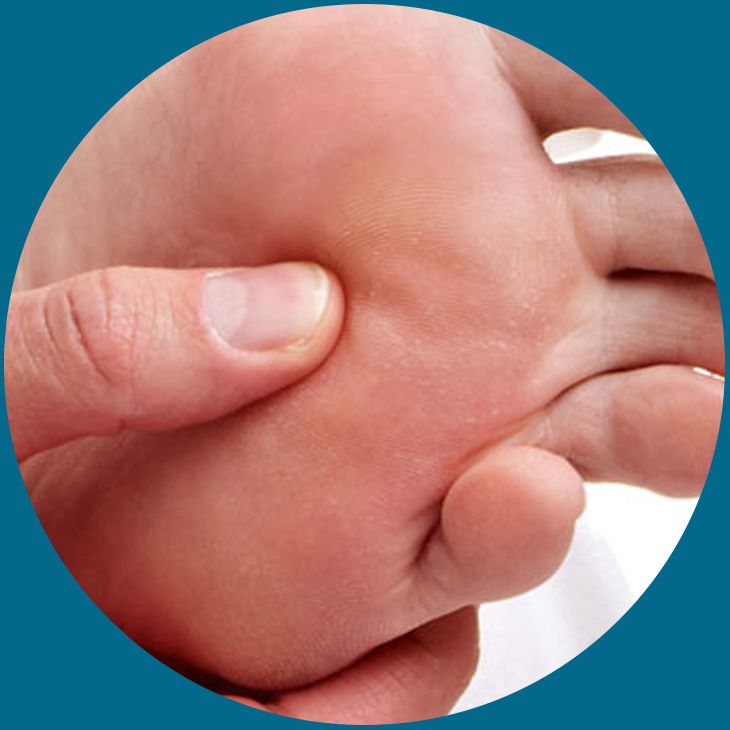
There are two small bones that sit beneath the big toe joint which are called sesamoids. The sesamoids sit within one of the tendons beneath the big toe joint and help to protect the tendons during walking and to stabilise the inside of the foot as we push off into the next step. They are the foot’s equivalent to the knee cap (Patellar). The top surface of the sesamoids is covered in cartilage as they form part of the big toe joint.
If there is too much pressure on the sesamoids or a direct injury then the area can become inflamed (sesamoiditis). In some instances, the cartilage on the sesamoid can be damaged and result in arthritis. It is also possible to fracture the sesamoids.
Generally, a direct injury or overuse during sport causes sesamoiditis. However, patients with a low arch or high-arched foot or a prominent joint can be predisposed to sesamoid damage/injury. In correctly fitting shoes or shoes with a higher heel can all increase stress to the sesamoid area. Some patients have enlarged sesamoids which can predispose to sesamoiditis

There are two small bones that sit beneath the big toe joint which are called sesamoids. The sesamoids sit within one of the tendons beneath the big toe joint and help to protect the tendons during walking and to stabilise the inside of the foot as we push off into the next step. They are the foot’s equivalent to the knee cap (Patellar). The top surface of the sesamoids is covered in cartilage as they form part of the big toe joint.
If there is too much pressure on the sesamoids or a direct injury then the area can become inflamed (sesamoiditis). In some instances, the cartilage on the sesamoid can be damaged and result in arthritis. It is also possible to fracture the sesamoids.
Generally, a direct injury or overuse during sport causes sesamoiditis. However, patients with a low arch or high-arched foot or a prominent joint can be predisposed to sesamoid damage/injury. In correctly fitting shoes or shoes with a higher heel can all increase stress to the sesamoid area. Some patients have enlarged sesamoids which can predispose to sesamoiditis
Severs Disease
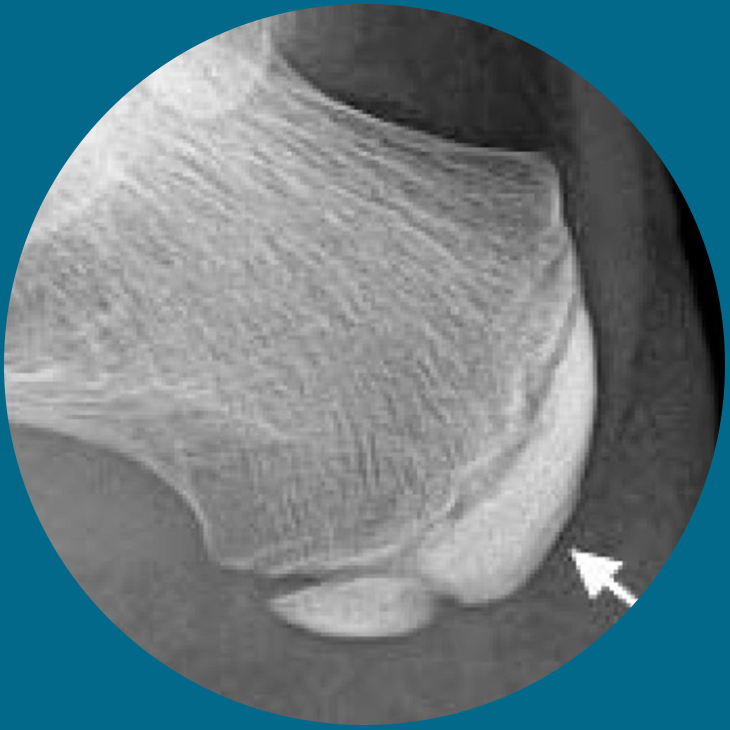
Sever’s disease occurs in children when the growth plate (which is the growing part of the heel) is injured. The foot is one of the first body parts to grow to full size. This usually occurs in early puberty. During this time, bones often grow faster than muscles and tendons. As a result, muscles and tendons become tight. The heel area is less flexible. During weight-bearing activity (activity performed while standing), the tight heel tendons may put too much pressure at the back of the heel (where the Achilles tendon attaches). This can injure the heel and cause Sever’s disease.
Young athletes typically sustain the injury due to repeated stress caused by running and jumping. Partaking in any high speed sports can thus partly provoke the condition, such as football, rugby, basketball, hockey or track athletics. Crucially the injury is linked to overuse, so exercising with fatigued leg muscles, without a suitable warm up, or beginning a new strenuous physical activity are all risk factors. Placing excessive weight or pressure on the heel can also cause the injury. Another factor related to Severs disease is over-pronation, a biomechanical error that makes the foot roll too far inwards.

Sever’s disease occurs in children when the growth plate (which is the growing part of the heel) is injured. The foot is one of the first body parts to grow to full size. This usually occurs in early puberty. During this time, bones often grow faster than muscles and tendons. As a result, muscles and tendons become tight. The heel area is less flexible. During weight-bearing activity (activity performed while standing), the tight heel tendons may put too much pressure at the back of the heel (where the Achilles tendon attaches). This can injure the heel and cause Sever’s disease.
Young athletes typically sustain the injury due to repeated stress caused by running and jumping. Partaking in any high speed sports can thus partly provoke the condition, such as football, rugby, basketball, hockey or track athletics. Crucially the injury is linked to overuse, so exercising with fatigued leg muscles, without a suitable warm up, or beginning a new strenuous physical activity are all risk factors. Placing excessive weight or pressure on the heel can also cause the injury. Another factor related to Severs disease is over-pronation, a biomechanical error that makes the foot roll too far inwards.
Supination
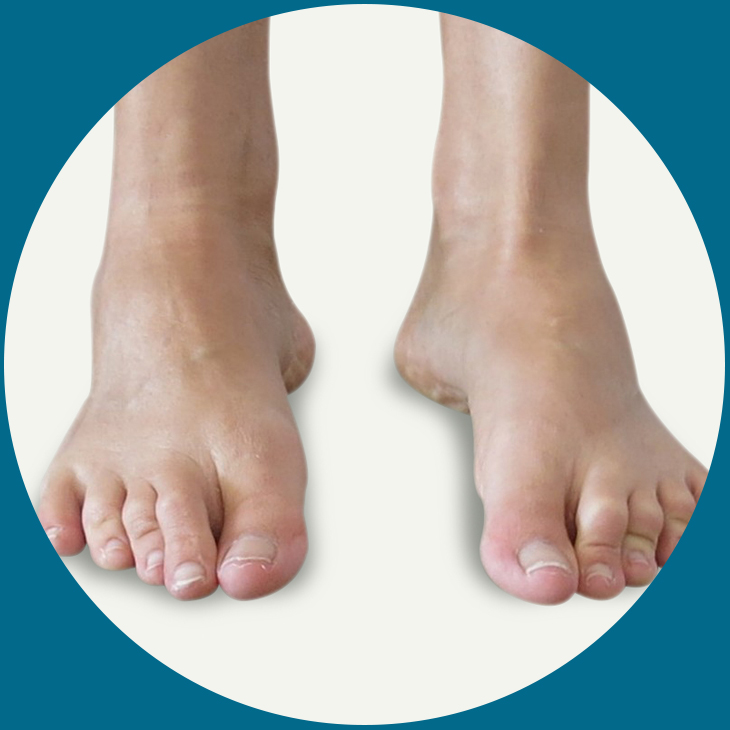
Supination is the opposite of pronation and refers to the outward roll of the foot during normal motion. A natural amount of supination occurs during the push-off phase of the running gait as the heel lifts off the ground and the forefoot and toes are used to propel the body forward. However, excessive supination (outward rolling) places a large strain on the muscles and tendons that stabilise the ankle, and can lead to the ankle rolling completely over, resulting in an ankle sprain or total ligament rupture.
The most common cause of supination is heredity – we inherit this biomechanical defect. The second most common cause is due to the way our feet were positioned in the uterus while we were developing; this is called a congenital defect.

Supination is the opposite of pronation and refers to the outward roll of the foot during normal motion. A natural amount of supination occurs during the push-off phase of the running gait as the heel lifts off the ground and the forefoot and toes are used to propel the body forward. However, excessive supination (outward rolling) places a large strain on the muscles and tendons that stabilise the ankle, and can lead to the ankle rolling completely over, resulting in an ankle sprain or total ligament rupture.
The most common cause of supination is heredity – we inherit this biomechanical defect. The second most common cause is due to the way our feet were positioned in the uterus while we were developing; this is called a congenital defect.
Tarsal Tunnel Syndrome
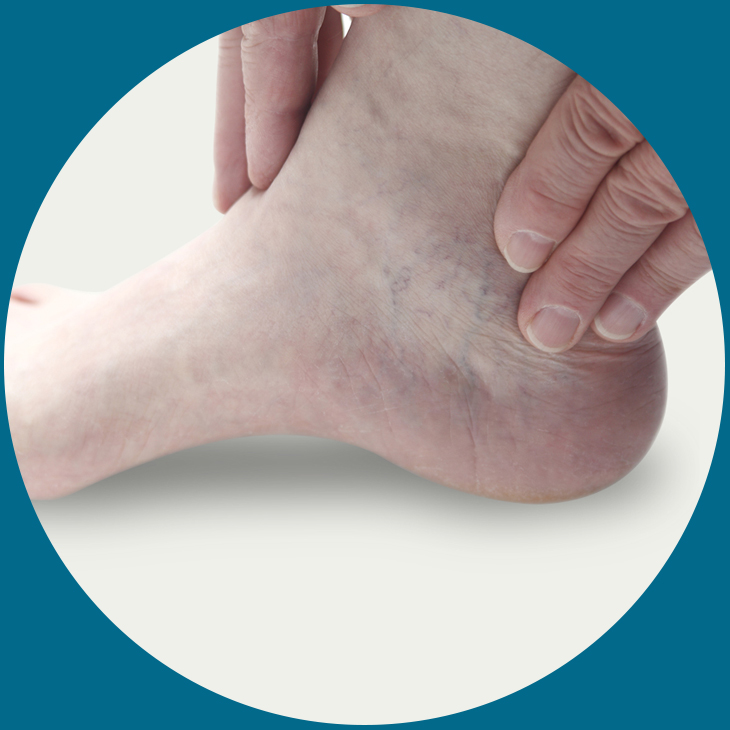
Tarsal tunnel syndrome is a compression, or squeezing, on the posterior tibial nerve that produces symptoms anywhere along the path of the nerve running from the inside of the ankle into the foot.
Tarsal tunnel syndrome is similar to carpal tunnel syndrome, which occurs in the wrist. Both disorders arise from the compression of a nerve in a confined space.
Tarsal tunnel syndrome is caused by anything that produces compression on the posterior tibial nerve, such as:
- A person with flat feet is at risk for developing tarsal tunnel syndrome, because the outward tilting of the heel that occurs with “fallen” arches can produce strain and compression on the nerve.
- An enlarged or abnormal structure that occupies space within the tunnel can compress the nerve. Some examples include a varicose vein, ganglion cyst, swollen tendon, and arthritic bone spur.
- An injury, such as an ankle sprain, may produce inflammation and swelling in or near the tunnel, resulting in compression of the nerve.
- Systemic diseases such as diabetes or arthritis can cause swelling, thus compressing the nerve.

Tarsal tunnel syndrome is a compression, or squeezing, on the posterior tibial nerve that produces symptoms anywhere along the path of the nerve running from the inside of the ankle into the foot.
Tarsal tunnel syndrome is similar to carpal tunnel syndrome, which occurs in the wrist. Both disorders arise from the compression of a nerve in a confined space.
Tarsal tunnel syndrome is caused by anything that produces compression on the posterior tibial nerve, such as:
- A person with flat feet is at risk for developing tarsal tunnel syndrome, because the outward tilting of the heel that occurs with “fallen” arches can produce strain and compression on the nerve.
- An enlarged or abnormal structure that occupies space within the tunnel can compress the nerve. Some examples include a varicose vein, ganglion cyst, swollen tendon, and arthritic bone spur.
- An injury, such as an ankle sprain, may produce inflammation and swelling in or near the tunnel, resulting in compression of the nerve.
- Systemic diseases such as diabetes or arthritis can cause swelling, thus compressing the nerve.
Verrucae
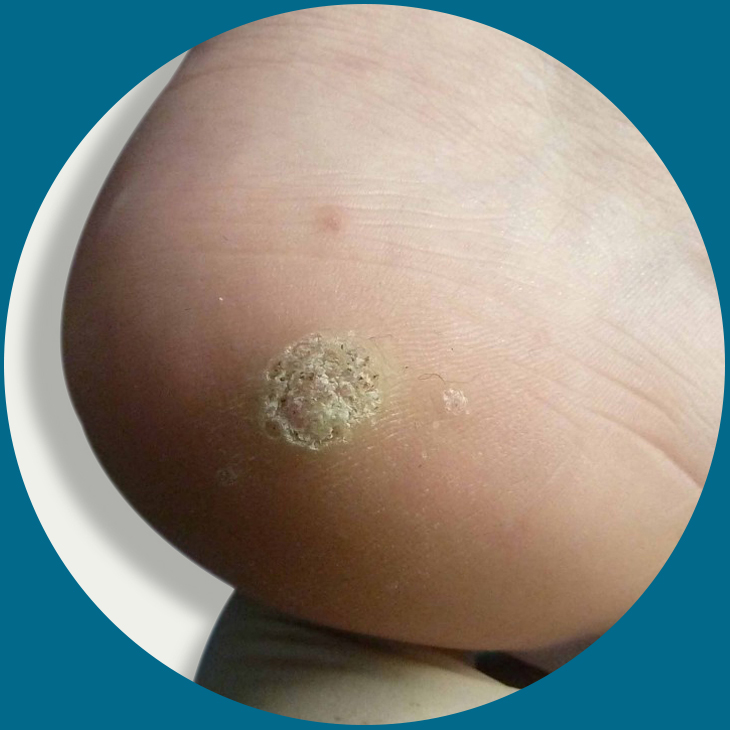
Verrucae are a common complaint amongst children and adults. A verruca is a small skin lesion which is commonly found on the bottom surface of the foot. The lesion is usually approximately 1cm in diameter but can be larger.
- All verrucae are caused by the human papilloma virus. This is common in all environments but does not readily attack the skin.
- If there is a break, scratch or a thorn in the skin, this will give the virus a opportunity to enter the skin.
- Verrucae are commonly contracted in communal places such as swimming pools, showers and changing areas. This is why children are more at risk of contracting verrucaes in school changing rooms and swimming pools.
- Excessive moisture or excessive dryness of the skin can lead to small crack in the skin which allows the virus to enter the skin.

Verrucae are a common complaint amongst children and adults. A verruca is a small skin lesion which is commonly found on the bottom surface of the foot. The lesion is usually approximately 1cm in diameter but can be larger.
- All verrucae are caused by the human papilloma virus. This is common in all environments but does not readily attack the skin.
- If there is a break, scratch or a thorn in the skin, this will give the virus a opportunity to enter the skin.
- Verrucae are commonly contracted in communal places such as swimming pools, showers and changing areas. This is why children are more at risk of contracting verrucaes in school changing rooms and swimming pools.
- Excessive moisture or excessive dryness of the skin can lead to small crack in the skin which allows the virus to enter the skin.




